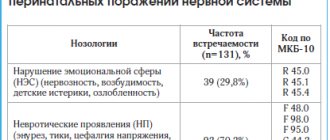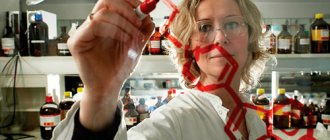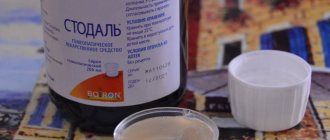FISHant-S® is a new class of active enterosorbents
, combining biologically inert components (highly purified medical paraffin oil) and prebiotics (pectin and agag-agar) in the form of a complex homogeneous microemulsion.
The classification of modern enterosorbents takes into account several parameters. The qualitative (positive) characteristics of enterosorbents are considered non-toxic, non-traumatic in relation to the mucous membrane, good evacuation of the sorbent from the body, high sorption characteristics, positive or no negative effect on secretion, etc.
Digestive system diseases:
- Cholelithiasis
- Gallbladder polyps
- Chronic cholecystitis
- Acalculous cholesterosis of the gallbladder
- Biliary dyskinesia
- Postcholecystectomy syndrome
- Fatty hepatosis (fatty liver)
- Chronic pancreatitis
- Fatty pancreatosis
- Dysbiosis (dysbacteriosis, bacterial overgrowth syndrome) of the intestine
- Chronic colitis
- Constipation
- Intestinal diverticulosis
- Syndrome of impaired digestion after antibiotic therapy, after various surgical interventions on the gastrointestinal tract, chemotherapy, radiation therapy
FISHant-S is a new direction in the treatment of lipid metabolism disorders
FSUE "GNII CTEOS"
Treatment
of dyslipoproteinemia (DLP) and diseases caused by them, despite the annual appearance of new drugs and treatment regimens on the pharmacological market, remains a difficult task. The reason is a flawed methodological approach to the treatment of DLP, which has not changed over many years: short-term (2-4 months) drug therapy with effective cholesterol-lowering drugs is not capable of normalizing morphofunctional disorders in target organs (arteries, liver, gall bladder, etc.) in such a short time .d.), on the one hand, on the other - treatment of only the target organ (for example, reconstructive operations on the arteries for atherosclerosis or cholecystectomy for cholelithiasis) and rejection of DLP as a metabolic problem of the whole organism, requiring long-term ( sometimes lifelong) treatment. Remaining unresolved, the root cause of the pathological process leads to the progression of the disease.
In the clinic of faculty surgery of the Russian State Medical University, the treatment of a number of diseases caused by disorders of lipid metabolism (obliterating atherosclerosis of the arteries of the lower extremities and abdominal organs, lipogenic pancreatitis, cholesterosis of the gallbladder, cholelithiasis, fatty hepatosis, etc.) is considered from the perspective of lipid distress syndrome (LDS). ) [1,2.8.4,5.9,14]. The listed diseases, in a practical sense, are only at first glance far apart from each other, but this is not a complete list of diseases associated with LDS. The successful clinical application of the principles of its treatment in other medical specialties (gastroenterology, otorhinolaryngology, neurology, gynecology, etc.) is explained by the fact that LDS
– the concept is not nosological, but etiopathogenetic and
represents a systemic pathological reaction of the body based on lipid metabolism disorders
in the form of processes that go beyond the target organ, contributing to the emergence of new or progression of existing diseases.
The pathological process in LDS is not limited only to a specific target organ; the entire organism is involved in it. The severity of the patient's condition with LDS is due to general dysmetabolic disorders and dysfunction of a specific target organ.
Regardless of the nosology, metabolic changes in LDS are systemic in nature and are accompanied by disturbances in various functions of the liver, which becomes the main target organ [1,2,5,11,12]. The main role in the development of morphofunctional changes in the liver is played by its reticuloendothelial system, acting in close cooperation with hepatocytes and microflora of the gastrointestinal tract. The most important link in the pathogenesis of LDS is changes in the host-microbiota system. Increased proliferation of bacteria in the ileum (especially anaerobes with their increased ability to deconjugate bound bile acids and form toxic endogenous bile salts) disrupts the natural mechanism of cholesterol homeostasis - the enterohepatic circulation of bile acids (EGBC) and contributes to the subsequent development of most pathological changes in the liver and progression DLP [13,17].
Restoring EGCFA using various conservative and surgical methods is the most promising direction in the treatment of lipid metabolism disorders [3,6.7].
Treatment of LDS is based on strict adherence to two principles:
1) The basis of treatment is the correction of lipid metabolism disorders; 2) Treatment of dyslipoproteinemia should be long-term (sometimes lifelong) and safe for the patient; Treatment of dyslipoproteinemia can be independent and (or) combined with any intervention on the target organ.
Therapeutic effects are carried out in 4 main areas: normalization of lipid metabolism; restoration of impaired metabolic functions of the liver; activation of the functions of the reticuloendothelial system; elimination of colon dysbiosis. All of them are equally important, and it is impossible to single out any one of them due to the close metabolic cooperation of all these disorders.
Many years of experience in the treatment of DLP in various clinical forms of LDS, a thorough analysis of the effectiveness and complications allowed us to highlight the blockade of EGCFA as a non-alternative method for correcting lipid metabolism disorders [5,11].
Firstly, EGCFA is the only natural mechanism of cholesterol homeostasis that ensures steroid sovereignty throughout a person’s life. Secondly, long-term lipid-correcting measures (even very effective ones in terms of reducing plasma lipids) require safety and the absence of complications. Thirdly, during the formation of LDS, the liver becomes the first target organ, so one can hardly count on its adequate metabolic response under pharmacological influence involving impaired enzyme systems of hepatocytes.
Taking into account the most important condition for the effectiveness of surgical and conservative blockade of EHCFA (a sufficient amount of bile produced by hepatocytes), a cardinal task can be identified - restoration of the processes of bile synthesis in the liver and its flow into the intestine.
Surgical blockade of the EGCC is a partial ileal bypass operation. Currently, the clinic uses the operation of partial ileal shunting according to Buchvald-Savelyev (RF patent No. 2122836), i.e. exclusion of the distal ileum from digestion with the imposition of terminolateral jejunoileal anastomosis in the terminal part of the ileum [15,16].
Conservative blockade of EGCFA with vaseline–pectin emulsion FISHant–S
. Having experience in conservative treatment of more than 2500 patients with LDS, we give preference to conservative blockade of the enterohepatic circulation of bile acids with a special drug developed in the clinic - vaseline-pectin emulsion FISHant-S (RF patents No. 2008821; 2054931; 2128991, permission of the Ministry of Health of the Russian Federation No. 005469). The abbreviation “FISH” means “Pharmacological (non-surgical) IleoBunting”, i.e. This drug, by its mechanism of lowering plasma cholesterol, is analogous to surgery; “S” is the first letter of the surname of the author of the drug (Savelyev) [5,11].
A comparison of the effectiveness of known and widely used lipid-lowering drugs in clinical practice, including inhibitors of the key enzyme of cholesterol synthesis, HMG-CoA reductase and FISHant-S, revealed the advantages of this drug. They consisted primarily in the absence of contraindications and complications during long-term (more than 5 years) treatment with an equal (and in some patients superior to statins) cholesterol-lowering effect (Fig. 1).
Rice. 1. Comparative assessment of the dynamics of total plasma cholesterol levels in the treatment of dyslipoproteinemia with FISHant-S, partial ileal shunt surgery according to Buchvald-Savelyev and statins (in% of initial values)
The clinical effectiveness and absolute absence of complications in the treatment of FISHant-S is explained, on the one hand, by its neutral components for the body (vaseline oil, pectin and agar-agar), and on the other hand, by the ability to restore the disturbed physiological balance of cholesterol by blocking EGCFA and active enterosorption and normalization of intestinal microbiocenosis (Fig. 2).
Rice. 2. Mechanism of action of FISHant-S (diagram)
FISHANT-S is not a medicine in the literal sense; rather, it belongs to the category of food additives, not being them in the classical sense, since its components are not absorbed in the gastrointestinal tract and are inert from a chemical point of view. FISHant-S essentially represents a new class of therapeutic agents in the form of a complex active multicomponent microemulsion (micelle size about 0.1 microns), thermodynamically stable in acidic and alkaline environments, reversible in the presence of bile acids, which is not involved in metabolism; not absorbed in the gastrointestinal tract; has high surface energy; structural orderliness; a certain orientation and organization of supramolecular formations (Fig. 3).
Rice. 3. FISHant-S: A - fiber-optic scanning; B - diagram of the structure of the micelle
Absolutely neutral for the body, not absorbed during transit through the gastrointestinal tract and easily evacuated from it, non-toxic, not damaging the mucous membranes, not changing the pH of the chyme and the environment, not disturbing the body’s metabolism, FISHant-S has the properties of an “active” enterosorbent , activates and restores numerous metabolic processes underlying the pathogenesis of LDS.
Each of the components of FISHant-S is actively involved in the normalization of lipid metabolism. Pectin, which forms the basis of the emulsion, is not absorbed in the small intestine, is resistant to the action of various enzymes and provides a unique biological effect based on the formation of a fibrous and amorphous matrix, in particular, like an “amorphous sieve”. The physicochemical properties of this matrix determine the homeostatic and therapeutic functions of dietary fiber. Vaseline oil (38% of the total mass of the emulsion) is located inside the pectin-agar-agar “membrane”, which actively transports bile acids, ideally dissolves them and, as part of a micelle, transports them to the large intestine. In it, pectin and agar-agar are subjected to microbial enzymatic treatment, ideally normalize the intestinal microflora and have a positive effect on digestive processes. After microbial transformations, bile acids dissolved in liquid paraffin are eliminated from the colon. Thus, the mechanism of fecal excretion of the steroid is restored.
Mechanisms of action of FISHant-S
have been studied quite well [3,5,6,11,14]. This:
– blockade of EGCFA;
– activation of the absorption capacity of the intestinal mucous membranes by simulating a food emulsion;
– dosed stimulation of receptor biologically active zones of the intestine;
– strengthening of metabolic processes due to immobilization of enzymes;
– increased metabolic activity of enzymes and microorganisms in the gastrointestinal tract;
– maintaining the stability of chyme as a dispersed system (colloidal protector), structuring and homeostasis of chyme;
– selective active enterosorption and transport of toxins, enzymes, heavy metal salts, regulatory peptides, prostaglandins, serotonin, histamine, etc.
In the clinical aspect, these mechanisms are implemented in the form of normalization of lipid metabolism (Fig. 4); reducing the activity of lipid peroxidation and increasing antioxidant potential; normalization of carbohydrate metabolism; restoration of many metabolic functions of the liver, including the synthesis and transport of bile (Fig. 5); activation of the reticuloendothelial system of the liver (Fig. 6); normalization of intestinal microbiocenosis (concentration and spectrum of volatile fatty acids and their isomers, species composition) (Fig. 7); activation of digestive enzymes. All this has a positive effect on structural and functional changes in target organs.
Rice. 4. Changes in the concentration of plasma lipids and lipoproteins during treatment with FISHant-S
Rice. 5. Dynamics of bile secretory (Tmax.) and bile excretory (T1/2) functions of hepatocytes during treatment with FISHant-S
Rice. 6. Dynamics of activity of liver Kupffer cells (T1/2) during treatment with FISHant-S
Rice. 7. Dynamics of biochemical parameters of colon microbiocenosis during treatment with FISHant-S
The main advantages of FISHant-S compared to many well-known pharmacological drugs should be the restoration of the natural mechanism of cholesterol homeostasis; neutrality of components; high cholesterol-lowering and clinical effect; possibility of safe long-term treatment; no complications; reception 1 time per week.
There are no contraindications to the use of FISHant-S, and no adverse reactions or complications have been identified.
Conservative therapy for LDS includes taking FISHant-S once a week for 4–12 months. according to the author's method [3]. The duration of treatment with FISHant-S depends on the severity of DLP, the degree of dysfunction of the liver and its reticuloendothelial system, the severity of colon dysbiosis, and is determined by the intensity of repair processes in the affected target organs.
conclusions
1. Conservative blockade of the enterohepatic circulation of bile acids with vaseline-pectin emulsion FISHant-S is an effective and safe method for treating lipid metabolism disorders.
2. The therapeutic effect of FISHant-S is due to the restoration of fecal excretion of bile acids impaired during dyslipoproteinemia, active enterosorption and normalization of intestinal microbiocenosis.
3. Not being a drug, enterosorbent or food additive in the classical sense, FISHant-S opens a new generation of chemically neutral, biologically active, clinically effective physiological therapeutic drugs.
Literature:
1. Dibirov A.D., V.A. Petukhov et al. Morphofunctional changes in the organs of the hepatopancreatobiliary system during experimental dyslipoproteinemia. //Bulletin of experimental biology and medicine, 2000, No. 7, pp. 45–51.
2. Dibirov A.D., Petukhov V.A., Donskova M.D. and others Changes in the organs of the pancreatohepatoduodenal zone in experimental lipogenic pancreatitis // Bulletin of Experimental Biology and Medicine 2000, No. 8, pp. 232–236.
3. Savelyev V.S., Yablokov E.G., Petukhov V.A. Method of treating dyslipoproteinemia and atherosclerosis by blocking the enterohepatic circulation of bile acids with the drug “FISHant-S” //RAO, Certificate No. 1498 dated 06/11/1996.
4. Savelyev V.S., Yablokov E.G., Petukhov V.A. // Gallstone disease as a form of lipid distress syndrome. // Annals of Surgery. – 1998. – No. 4. – p.41–45.
5. Savelyev V.S., Yablokov E.G., Petukhov V.A. Lipid distress syndrome in surgery // Bulletin. exp. biol. – 1999. – T. 127, No. 6. – P. 604–611.
6. Savelyev V.S. Lipid distress syndrome in surgery // Vestn. Ross. military-med. academy. – 1999. – No. 1. – P. 36–39.
7. Savelyev V.S. Lipid distress syndrome in surgery. Keynote speech at the general session of the Russian Academy of Medical Sciences. Bulletin of the Russian Academy of Medical Sciences, 1999
8. Savelyev V.S., Petukhov V.A. Blockade of enterohepatic circulation of bile acids in the treatment of chronic postnecrotic lipogenic pancreatitis // Annals of Surgery. – 2000. – No. 2. – P. 24–29.
9. Savelyev V.S., Petukhov V.A. Gallbladder cholesterosis. – M.: VEDI, 2002. – 192 p.
10. Savelyev V.S., Petukhov V.A. Extrahepatic biliary dysfunctions in lipid distress syndrome: etiopathogenesis, diagnosis and treatment principles // Rus. Honey. magazine – 2002. – No. 9. – P. 56–62.
11. Petukhov V.A. Lipid distress syndrome (edited by academician V.S. Savelyev). M.: VEDI, 2003. – 96 p.
12. Petukhov V.A. Gallstone disease and indigestion syndrome. M.: VEDI, 2003. – 176 p.
13. Shenderov B.A. Medical microbial ecology and functional nutrition. In 2 volumes. – M.: Grant, 1988.
14. Yablokov E.G., Petukhov V.A. Dyslipoproteinemia and obliterating atherosclerosis. – M., 1996. – 147 p.
15. Buchwald H., Richard B.Moore, Richard L.Varco “Surgical treatment of hyperlipidemia.” //Circulation, 1974, XLIX(suppl. n.1), n.65.
16. Buchwald H., Matts JP, Fitch L. et. al.// Program on the surgical control of the hyperlipidemia (POSCH): design and methodology. POSCH group.// L/ Clin. Epidemiol. – 1989 – vol.42 (12) – p.1111–1127.
17. Fukushima K., Shindp K., Yamazaki R. Et al. Jejunal bacterial flora and deconugation of bile acids. // J. Germfree, v. 5, No. 1.
Quality certificates
FISHant-Extra is a certified drug for the prevention of atherosclerosis. It is used not only as an effective prophylactic against atherosclerosis, but also for cardiovascular, allergic diseases, metabolic disorders, chronic intoxications, as well as:
- overweight and obesity;
- diabetes mellitus;
- metabolic syndrome;
- chronic cholecystitis;
- cholelithiasis;
- intoxication in various diseases;
- chronic thrombophlebitis;
- coronary heart disease;
- varicose veins.
Advantages
FISHant-Extra has a complex effect on the body:
- blocking - the drug prevents toxins and cholesterol from entering the circulatory system by binding them in the intestines and evacuating them from the body;
- burning - to compensate for the resulting bile deficiency, the liver uses excess cholesterol from other organs. As a consequence of this process, the elasticity and smoothness of blood vessels increases, the contractility of the gallbladder is restored, and the liver gets rid of fats;
- normalization - the entry into the circulatory system of toxins that destroy the vascular endothelium stops. By blocking excess cholesterol in the intestines, atherosclerotic plaques do not form.
The drug has valuable advantages:
- suitable for long-term use;
- has no side effects;
- activates the liver and pancreas;
- is not addictive;
- has an affordable price.
What it is?
Most people are not even aware of the increase in cholesterol and the threat of atherosclerosis.
Ignorance of the real state of your health can lead to serious complications. Thanks to the latest scientific developments, FISHANT-Extra has been created - an effective drug for the prevention of ATHEROSCLEROSIS, which gently cleanses blood vessels without harm to the body, helps to normalize the functioning of the intestines and digestive system.
After passing clinical trials, the drug was recognized as one of the best drugs against atherosclerosis.
Instructions for taking FISHant-S®
Recommendations for taking FISHant-S®:
Adults take FISHant-S® on an empty stomach or an hour after breakfast, 100 g of the contents of a jar (half a jar) twice a week. Sometimes washed down with juice, water or other liquid. Duration of use is 3-4 weeks or longer, depending on the indications and results of use. The dosage schedule and quantity may be changed according to the doctor's opinion. Medicines, including vitamins, must be taken 2 hours before taking FISHant-S®.
Contraindications for taking FISHant-S®:
Individual intolerance to components. It is not recommended to take during breastfeeding and pregnancy, since the drug has not been used in this group and there is no data on its effect on the body of the mother and fetus. Also for this reason, it is not recommended to take the drug to persons under 16 years of age.
Overdose:
A short-term laxative effect is possible, which disappears when using the recommended, normal dose. Interaction with drugs: within 12-24 hours after taking FISHant-S®, restrictions on the absorption of other drugs taken the day before may occur. To prevent a decrease in the effectiveness of other medications you are taking, they must be taken at least an hour before FISHant-S®.
No side effects when taking FISHant-S®
The absence of complications and side effects, as well as the greater efficiency of enterosorption with the help of the drug FISHant-S®, is explained by the content of components that are absolutely neutral for the body (vaseline oil, seaweed agar, pectin), as well as by helping to restore the disturbed physiological balance of cholesterol using blockade of EGCFA, active enterosorption and normalization of the environment of intestinal microorganisms (Fig. 2).
Rice. 3. Mechanism of action of FISHant-S® (diagram)
Enterosorbent FISHant-S® consists of completely neutral components for our body, is not absorbed passing through the intestines, and is completely excreted from the body with feces. In this regard, the drug does not have a negative effect on the liver, unlike other drugs that lower cholesterol levels and are taken in the treatment of atherosclerosis. It is also beneficial to restore digestion, digestion and absorption of food components, which leads to weight loss, which is observed in obese people when taking enterosorbent FISHant-S®.
How to use
FISHant-Extra is a paste-like substance resembling baby puree, packaged in 200 g plastic jars. One jar is enough for a week of use. The drug ensures normalization of processes at the physiological level.
The course of treatment is 2-6 months. It is recommended to consume FISHant-Extra daily, 1 tablespoon.
Reviews from doctors
Efimova I. S. nutritionist:
FISHANT-Extra is an improved drug against atherosclerosis. The number of patients with high cholesterol is increasing every year.
Improper lifestyle is the main reason for the massive spread of atherosclerosis among the population. I recommend a strict diet to my patients, which will be effective only if the body is cleansed.
After a full course of the drug, many people manage to completely normalize their cholesterol levels, get rid of fat deposits and atherosclerosis.
Sorption capacity of FISHant-S®
The sorption capacity and intensity of endotoxin absorption (especially in the 1st hour of sorption) of the FISHant-S® enterosorbent is 4-9 times higher than the others.
| Enterosorbent | Sorption capacity (units/g) |
| FISHANT S® | 28,5 |
| Enterosgel | 7,4 |
| Smecta | 7,2 |
| Polysorb | 6,9 |
| Chitosan | 4,5 |
| Lacto filter | 4,0 |
| Filtrum | 3,7 |
| Polyphepan | 3,4 |
| Activated carbon | 3,2 |
Enterosorbent FISHant-S® does not affect metabolism because it is absolutely neutral, is not absorbed during transportation through the gastrointestinal tract, and also does not enter into chemical interactions and does not form toxic and chemical compounds.
The positive side of the FISHant-S® enterosorbent is the presence in its structure of prebiotic components (pectin and agag-agar), which actively and firmly bind endotoxin, and highly purified medical vaseline oil, a chemically inert product.
The fundamental and one of the important quality of the drug FISHant-S® in comparison with other drugs of similar action is its high sorption capacity and the ability to absorb endotoxin not only from the intestinal contents, but also as part of toxic complexes “bile acids-endotoxin”, and also create a natural obstacle absorption of endotoxin, good evacuation from the intestines, formation of a protective film on the mucous membrane and a beneficial effect on the intestinal microflora, does not cause constipation.
When FISHant-S® was used by people with lipid metabolism disorders, a decrease in blood cholesterol levels was noted.





